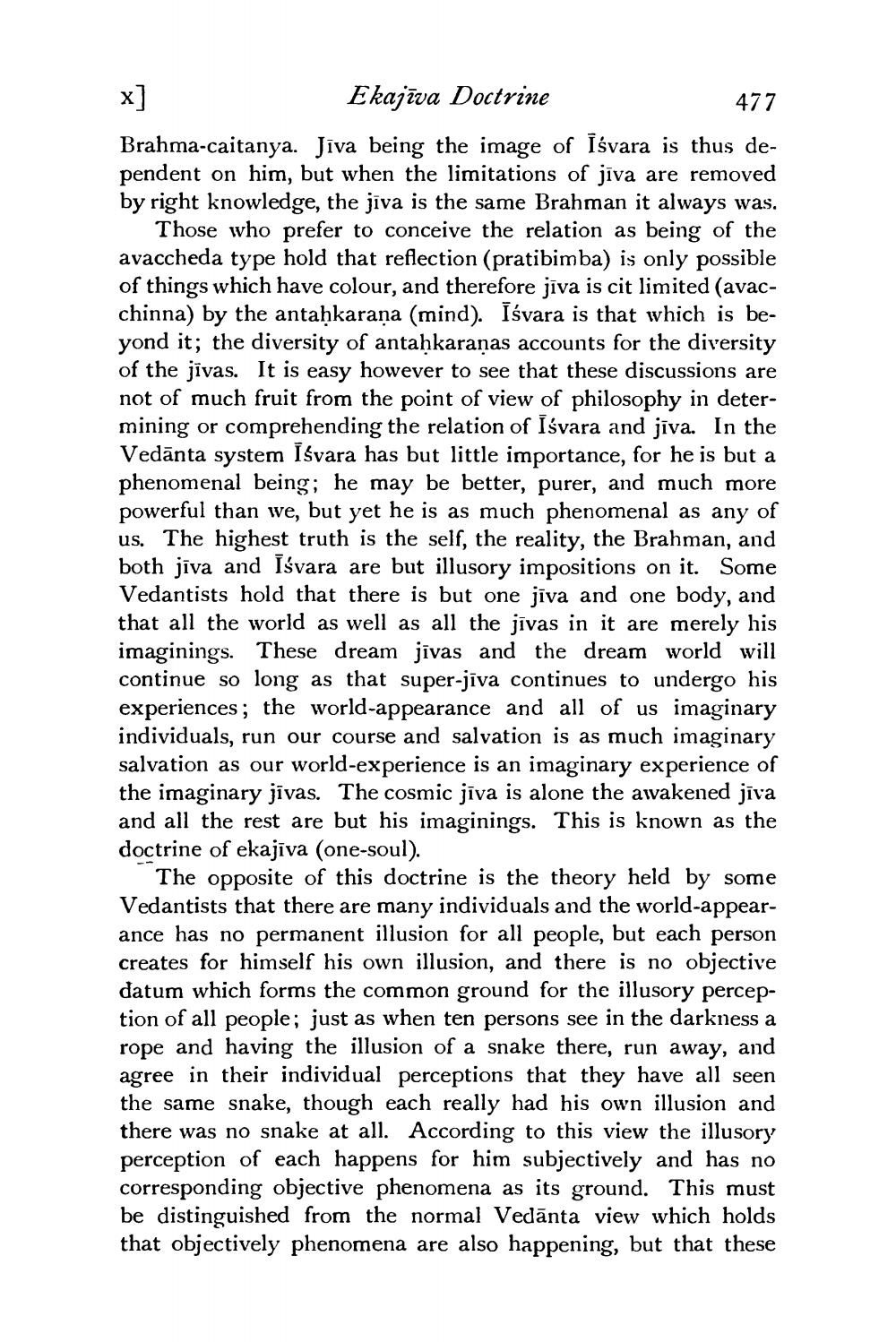________________
Ekajīva Doctrine
477
Brahma-caitanya. Jiva being the image of Īśvara is thus dependent on him, but when the limitations of jiva are removed by right knowledge, the jīva is the same Brahman it always was,
Those who prefer to conceive the relation as being of the avaccheda type hold that reflection (pratibimba) is only possible of things which have colour, and therefore jīva is cit limited (avacchinna) by the antahkarana (mind). Iśvara is that which is beyond it; the diversity of antahkaranas accounts for the diversity of the jivas. It is easy however to see that these discussions are not of much fruit from the point of view of philosophy in determining or comprehending the relation of Iśvara and jīva. In the Vedānta system īśvara has but little importance, for he is but a phenomenal being; he may be better, purer, and much more powerful than we, but yet he is as much phenomenal as any of us. The highest truth is the self, the reality, the Brahman, and both jīva and Isvara are but illusory impositions on it. Some Vedantists hold that there is but one jīva and one body, and that all the world as well as all the jīvas in it are merely his imaginings. These dream jīvas and the dream world will continue so long as that super-jīva continues to undergo his experiences; the world-appearance and all of us imaginary individuals, run our course and salvation is as much imaginary salvation as our world-experience is an imaginary experience of the imaginary jīvas. The cosmic jīva is alone the awakened jīva and all the rest are but his imaginings. This is known as the doctrine of ekajīva (one-soul).
The opposite of this doctrine is the theory held by some Vedantists that there are many individuals and the world-appearance has no permanent illusion for all people, but each person creates for himself his own illusion, and there is no objective datum which forms the common ground for the illusory perception of all people; just as when ten persons see in the darkness a rope and having the illusion of a snake there, run away, and agree in their individual perceptions that they have all seen the same snake, though each really had his own illusion and there was no snake at all. According to this view the illusory perception of each happens for him subjectively and has no corresponding objective phenomena as its ground. This must be distinguished from the normal Vedānta view which holds that objectively phenomena are also happening, but that these




